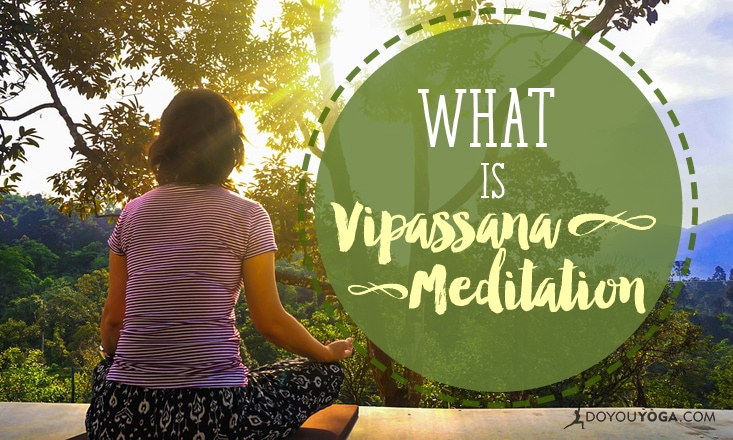So you might not have heard of Vipassana meditation, but you’ve most certainly heard of mindfulness. But did you know that mindfulness, this craze that’s taking the Western world by storm, has been practiced for thousands of years in the East under its original name, Vipassana Meditation?
Vipassana literally means “insight”, or “clear seeing.” It’s all about seeing things as they really are without judgement, argument, or interpretation. In the Buddhist tradition, this form of meditation is meant to provide insight into the true nature of reality.
And this is not just nature in the theoretical sense—this is actually the meditation that the Buddha practiced while immersed in nature, sitting under the tree.
How to Practice Vipassana Meditation
There is nothing complicated about this style of meditation, in fact it is inherently simple. It asks us to be aware and observe what is happening in the present moment.
To practice, you simply find a comfortable seat and breathe normally, without any extra effort. Then, focus your attention on the rise and fall of the belly.
This is where your attention should stay, as this is all that should be happening in this moment. The thoughts should be wholly focused on this rising and falling that you should carry the mantra “rising…falling”. When the mind wanders off, as it inevitably will, the thoughts then observe whatever the distraction may be, and label it in its simplest form.
So, for example if there is a loud sound that demands your attention, label that thought as “hearing.” If the distraction is internal, like thoughts of the past or future, acknowledge and label those thoughts as “remembering or planning.” The idea is not to punish yourself for these distractions, but rather to simply be aware of them, label them, and come back to the attention of the rising and falling breath.
It is suggested that we practice this meditation for one hour a day, but to also carry this mindset with us in everything we do. If we were to practice Vipassana meditation all day, we would continue to observe and label each activity we take part in. Whether it's “open the door,” or “wash the dishes,” mindful attention should be ever present.
Stay Present and Avoid Negative Labels
The idea here is really to be completely present in whatever it is that you are doing. We are often distracted and so completely disconnected from the present moment that we don't see things as they really are. Additionally, assigning arbitrary meaning to each and everything we encounter takes us even farther from this true nature of things.
For example, we generally think of doing the dishes as an annoying, mundane task. Thus we assign a negative label to it and possibly find ourselves becoming irritable while doing it. Instead, Vipassana meditation encourages us to think of this task as neither good nor bad, but simply as “doing the dishes”.
No task in inherently good or bad, it's just our thoughts about them that make them seem good or bad to us. Being aware of these thoughts, and shifting away from negative associations, can shift your mood and attitude from resistance to contentment.
Should You Give Vipassana Meditation a Try?
Mindfulness has been shown to have incredible benefits. From improving mood, to easing depression, and improving physical aliments, mindfulness is powerful stuff. Being completely present in the moment soothes the anxious thoughts that keep us tied to the past or future. It allows us to achieve mental clarity so that we can show up for the responsibilities in our life with a renewed sense of calm and purpose.
In an increasingly stressed out world, finding this calm is becoming more and more appealing. Thus we see business, schools, prisons, and athletes turning to mindfulness to improve performance, productivity, and increase overall happiness.
This all might seem too heavy or intimidating at first, but the truth is that it’s incredibly simple. Starting a mindfulness or meditation practice doesn't have to be a huge commitment, and you definitely don't need to start with an hour a day.
Try to find small ways to be more present in your life. Put down your phone and just breathe, allowing your mind to quiet and your thoughts to arrive in the moment. Try this for a bit longer each day and see what happens.
Have any of you tried Vipassana Meditation and have suggestions for getting started or success stories to share?


